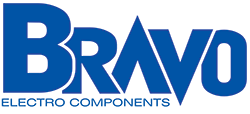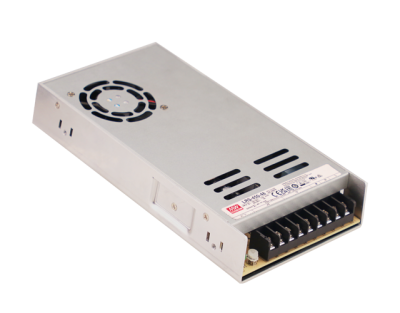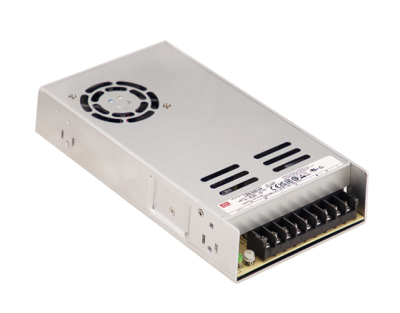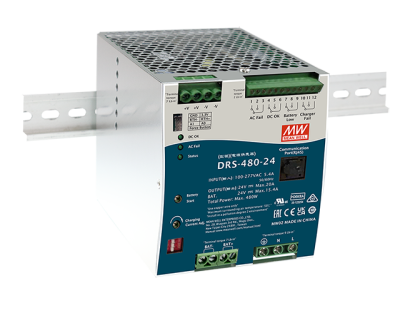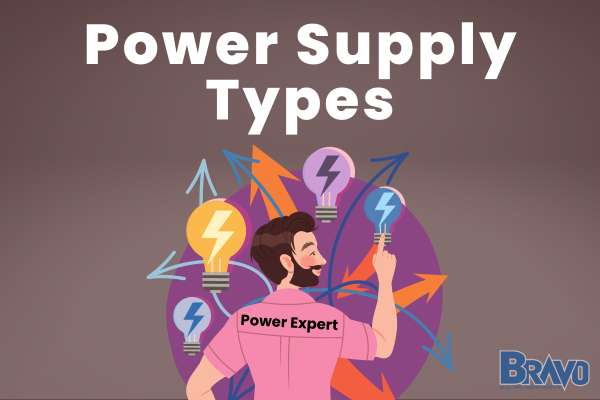
Whether you need a power supply replacement or you’re trying to build a custom system from scratch, choosing among the seemingly endless list of power supply types is a challenge.
Selecting the wrong types of power supply can lead to poor performance, costly system downtimes, or even catastrophic power supply failure.
The good news is we’re here to provide you with a sense of clarity and confidence navigating all the different types of power supplies in this guide. The most common power supply types include:
- Linear Power Supplies
- Switching Power Supplies
- Uninterruptible Power Supplies (UPS)
- Variable Power Supplies
- Programmable Power Supplies
- Modular Power Supplies
- High Voltage Power Supplies
- DC-DC Converters
- AC-DC Power Supplies
- External (or Wall-mount) Power Supplies
- Battery Chargers
- Redundant Power Supplies
- DIN Rail Power Supplies
- Inverters
- Rack Mount Power Supplies
- Regulated Power Supplies
- Solar Power Supplies
- LED Power Supplies (LED Drivers)
- Custom Power Supplies
- Computer Power Supplies (PC)
And, remember - all the common styles are available right here at Bravo Electro, your trusted partner in keeping your operation running smoothly. You can enjoy peace of mind by reaching out right now and asking us which type of power supply best suits you.
What is a Power Supply (PSU)?
Before getting into the different types of power supplies it’s important to understand the role these play in the first place. These essential devices convert electrical energy from a source into the appropriate voltage, current, and frequency required to power a specific load or system.
The goal of a PSU is to provide a stable and reliable flow of energy, safeguarding equipment while optimizing performance. They’re essential in everything from telecommunications and industrial automation to medical devices and renewable energy systems.
But where things get tricky is distinguishing between all the different types of power supplies - which is what we’re going to focus on today.
All the Different Power Supply Types Explained
Selecting the right type of PSU not only ensures optimal performance but also enhances the power supply lifespan and safety of your devices. Here are all the common PSU types:
Linear Power Supplies
A linear power supply is, in many ways, the classic choice. It operates by taking the input voltage, and then, through a combination of transformers, diodes, and filters, provides a steady, direct current (DC) output.
The process, however, can lead to some energy loss in the form of heat. Still, these are known for low noise and minimal ripple, with fewer components and a simpler configuration.
Switching Power Supplies
Now, let’s look at the other half of the linear vs switching power supply debate. Switching power supplies, or switched-mode power supplies (SMPS), are the modern counterparts to linear ones.
These work by rapidly switching on and off to regulate the output voltage. This method is far more efficient and allows for a compact design.
However, they can produce more electrical noise compared to linear power supplies. This can create interference and the more complex design has more points of failure, too.
Uninterruptible Power Supplies (U.P.S.)
This type of power supply is a lifeline in scenarios of power disruptions. As the name suggests, it provides continuous power even if the main supply fails. This guarantees reliability and peace of mind.
But how does uninterruptible power supply work? It achieves this feat by storing energy in batteries and then switching to this stored power instantaneously during outages, ensuring no interruption.
Variable Power Supplies
Variable power supplies let you adjust the output voltage or current to meet the specific requirements of the equipment or application in question. These are often equipped with knobs, dials, or digital controls for precise customization.
Programmable Power Supplies
Programmable power supplies allow users to set specific voltage and current levels based on their needs. They’re highly versatile in this sense.
They can be controlled either manually through knobs and dials or digitally via software. This flexibility enables users to adjust power outputs for different tasks and applications.
Modular Power Supplies
Modular power supplies are designed with separable components, allowing users to customize their setups. They can be tailored to fit specific needs, ensuring no excess capacity or deficiency. This is very cost-effective and streamlines maintenance.
High Voltage Power Supplies
As the name suggests, high voltage power supplies deliver higher voltages than standard units. They're specifically designed to ensure safety and performance when working with high voltage applications.
DC-DC Converters
A DC to DC converter converts direct current (DC) voltages from one level to another, making them crucial in various applications where precise voltage adaptation is needed. They can step up or down depending on the use-case and configuration.
AC-DC Power Supplies
An AC to DC converter transforms the high voltage alternating current (AC) that powers our homes and businesses into a usable, steady direct current (DC) that the majority of electronic devices require. This ensures that devices receive the correct voltage and current levels to operate efficiently and safely.
Our blog has more resources on the difference between AC and DC power, including whether house power is AC or DC, if you’d like to learn more.
External (or Wall-mount) Power Supplies
External power supplies represent a design decision to keep the power transformation process outside the main device. By doing so, devices can stay cooler, become more compact, and avoid internal complexities linked to power conversion.
Battery Chargers
Battery chargers are devices used to inject energy into secondary cells or rechargeable batteries. They do this by driving an electric current through them. They’re becoming more and more prevalent with the rise of autonomous robots in the workplace.
Redundant Power Supplies
Redundant power supplies (RPS) are systems designed to provide continuous power, even if one or more power sources fail. But what is the advantage of having a redundant power supply?
They offer peace of mind knowing your operation will remain running no matter what happens. They’re a must-have in mission-critical scenarios where power failure is not an option - be it the medical field or in industrial workplaces.
DIN Rail Power Supplies
What is a DIN rail power supply, exactly? A DIN rail power supply is a compact, standardized device designed for mounting on DIN rails. It is commonly used in equipment rack installations and industrial control systems.
Inverters
Inverters play a crucial role in converting direct current (DC) from sources like batteries or solar panels into alternating current (AC) which is typically used by most household and industrial devices.
Rack Mount Power Supplies
Rack mount power supplies are designed for easy integration into standardized 19-inch equipment racks. They provide a convenient and organized solution for multiple power supply requirements.
Regulated Power Supplies
Regulated power supplies maintain a constant output voltage or current regardless of variations in input voltage or load conditions. This protects sensitive equipment that’s unable to tolerate fluctuations.
You can learn more about the differences between an unregulated vs regulated power supply in our blog if you’d like.
Solar Power Supplies
Solar power supplies convert sunlight into electrical energy, either storing it in batteries or supplying it directly to equipment. These systems are an eco-friendly solution for remote or off-grid applications.
LED Power Supplies (LED Drivers)
Also known as LED drivers, these regulate power to LEDs for safe and efficient operation. They provide a constant current or voltage tailored to the requirements of the LEDs, protecting them from power surges or fluctuations.
Custom Power Supplies
Last but certainly not least in our list of power supply types is the customized power supply. These are the solutions for unique applications or specific requirements that aren't met by off-the-shelf products. They’re designed to precise power supply specifications to ensure they fit perfectly into a system's needs.
The key is to find a partner you can trust in bringing your custom power supply to life - and we fit the bill here at Bravo Electro. More on that later,
Computer Power Supplies (PC PSUs)
Last but certainly not least on our list of the power supply types we have the PC power supply, or computer power supply. These are used specifically to power a computer and can be found in different types of power supplies as well:
- ATX Power Supplies: The most common type, designed for standard desktop systems. These follow the ATX (Advanced Technology eXtended) standard, ensuring compatibility with most motherboards and cases.
- SFX Power Supplies: Small Form Factor (SFX) units cater to compact builds like mini-PCs, where space constraints are critical.
- Modular and Semi-Modular PSUs: Offer customizable cabling, allowing users to connect only the necessary cables for a cleaner setup and improved airflow.
- High-Wattage PSUs: Designed for systems with multiple GPUs or high-performance requirements, such as gaming rigs or workstations.
PC PSUs are exclusively used in desktop computers, servers, and gaming systems. They ensure stable and efficient power delivery to components like CPUs, GPUs, storage drives, and RAM.
Find All the Different Types of Power Supplies at Bravo Electro!
Bravo Electro is the trusted name professionals turn to for all things industrial power supplies. We've curated a vast selection of the best brands and models, ensuring you'll find the perfect fit for any application.
Our dedicated customer support team is always on hand to guide you through your options, ensuring you make an informed decision. Beyond just selling power supplies, we're committed to providing solutions that drive success for our customers.
Whether you’re looking for a 12 volt power supply, 24 volt power supply, 48 volt power supply, or one of the higher-voltage units we described earlier - Bravo Electro is a brand you can count on.
So, if you’re still uncertain about which of the different power supply types is right for you let’s talk it over today!
Parting Thoughts on the Various Power Supply Types
That concludes our thorough breakdown of the different types of power supplies. We hope you have a better grasp on the role each style plays in the world of power, and more importantly, which is right for you and your operation
Remember, the right power supply does more than just power your equipment - it's a cornerstone of a reliable and efficient system. Invest in peace of mind by connecting with us at Bravo Electro today!
